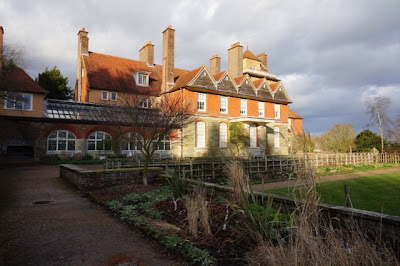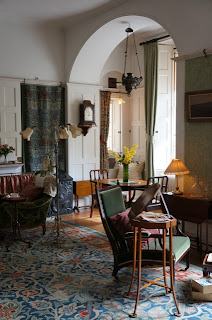So you've decided to make a trip to the UK, but where do you start? Here's a brief guide to planning your visit.
1. Start with the big decisions:
-How many days will you be there for? (don't include travel days)
-What region of the UK will you be traveling to? (i.e. London, South West England, Yorkshire, Northern Wales, Northumberland, Southern Scotland, etc).
-Are you going to stay in one location and explore locally, or are you going to hop across the countryside to various big-ticket attractions?
-Will you be renting a car, or traveling via public transportation?
-Do you have any destinations or attractions that you can't live without seeing? (Planning around these attractions is important because their respective opening times will determine the rest of your itinerary options)
2. After you've made your big decisions, pick your attractions accordingly. This requires either a good travel guide or some internet research. Just start searching/flipping through pages, and bookmark anything that jumps out at you (you can always edit later). If you are traveling with a companion, share your top ten or fifteen favorites and then edit together, keeping in mind whether you want to see a variety of attractions, or if you want to stay focused on a particular theme (such as gardens, castles, rural estates, super-fancy estates, museums, landscapes, city, historical sites, food, theater, etc.)
*As part of the process of choosing attractions, you want to keep in mind the amount of travel time and visiting time each attraction is going to require. This will play a big part in narrowing down your final choices.
3. Once you've narrowed down your attraction choices (but not finalized them yet), this is the time when you start looking for lodging. Finding the perfect location, type of lodging, and price can be a tricky business, especially if you're staying in more than one area during your trip. If cost is not an issue than you'll have a much easier time, but for a lot of us that's not the case. If you're one of the many, than look for affordable lodging in larger towns that are either within easy reach of your chosen form of transportation (i.e. a tube station, a train station, or a major highway), or in a location that is close to the majority of your chosen attractions. Remember, traveling to your attractions usually takes longer than you think, so you're better off staying near your ultimate destinations as opposed to spending all your time traveling to them. Then reserve those rooms - availability can be scarce, especially in the summer, so booking far in advance can be essential.
4. Now it's time to finalize that itinerary:
-Create a document that organizes your trip day by day, so that you know what attractions are open when, and how you need to organize your time accordingly.
-Build in travel times and directions (by using google maps or another map website), reservation numbers, and even historical information about your destinations. It can be as basic or as detailed as you want it to be, but even the bare-bones will help you to remember what you want to do while you're on your trip (you may think you'll remember, but once you're there its easy to get distracted and forget about really important attractions, trust me).
-Be aware of the pace you want to set for yourself and your companions, taking into account respective energy-levels and regular meal-times. Almost everybody requires a rest time at some point in the day.
-You might want to build in free time so that you have the option of checking out some attractions you didn't know about until you got there (there are usually some pleasant surprises).
-You can also double book yourself for possible attractions, and then choose the one that most interests you once you're there. It doesn't hurt to have back-ups, especially if one of your first choices happens to close unexpectedly.
5. Once your itinerary is finished, and your reservations are made, it's time to get ready for your trip. Everybody's requirements are different, but these are some of the travel essentials:
-Find out if you need passports, visas, international health insurance, travel insurance, rental car insurance, etc.
-If you need a passport (as most of us do) make sure that you know where it is, and that it's current. If you put it in a "safe place" prior to travel, make sure that you make a note of where you put it, and that it's somewhere that you look often. It's very easy to hide your passport on yourself.
-If you need to get a passport or renew it, make sure you start the process as soon as six months before your trip (if not earlier). Otherwise you may find yourself needing to hire a passport expediter service, and those are not cheap.
-Make sure your credit card company knows when and where you are going to be traveling (or they can turn off your credit card/debit card, and it's a pain to get that fixed in the middle of your trip).
-Pack for the weather, with an emphasis on choosing appropriate footwear.
-Purchase an international cell phone, an international calling card, or get Skype for your internet-capable device. If you don't want to pay for a phone, than finding wi-fi for your Ipod or Iphone can be a relatively easy alternative (unless you are in a rural area, of course), and calling home via Skype is ridiculously inexpensive. My preferred way to travel is with a pay-as-you-go cell phone for emergencies and very short calls, and Skype on my Ipod for longer calls home (bring a headset with a built-in mic, since cities can be noisy).
Well, I guess that's it for now. I can get into a lot more detail, but I'll save that for later.
Good luck, and happy traveling!






